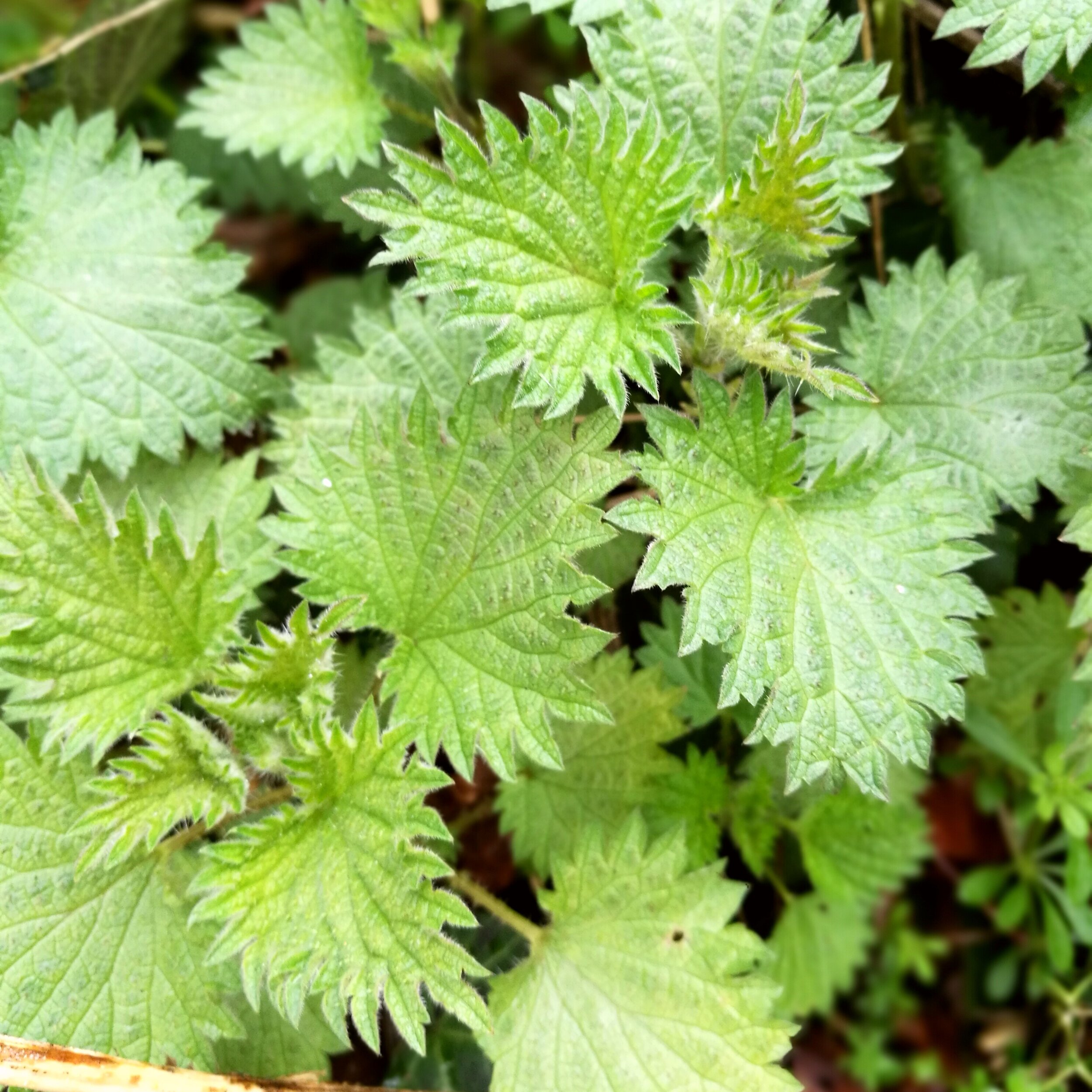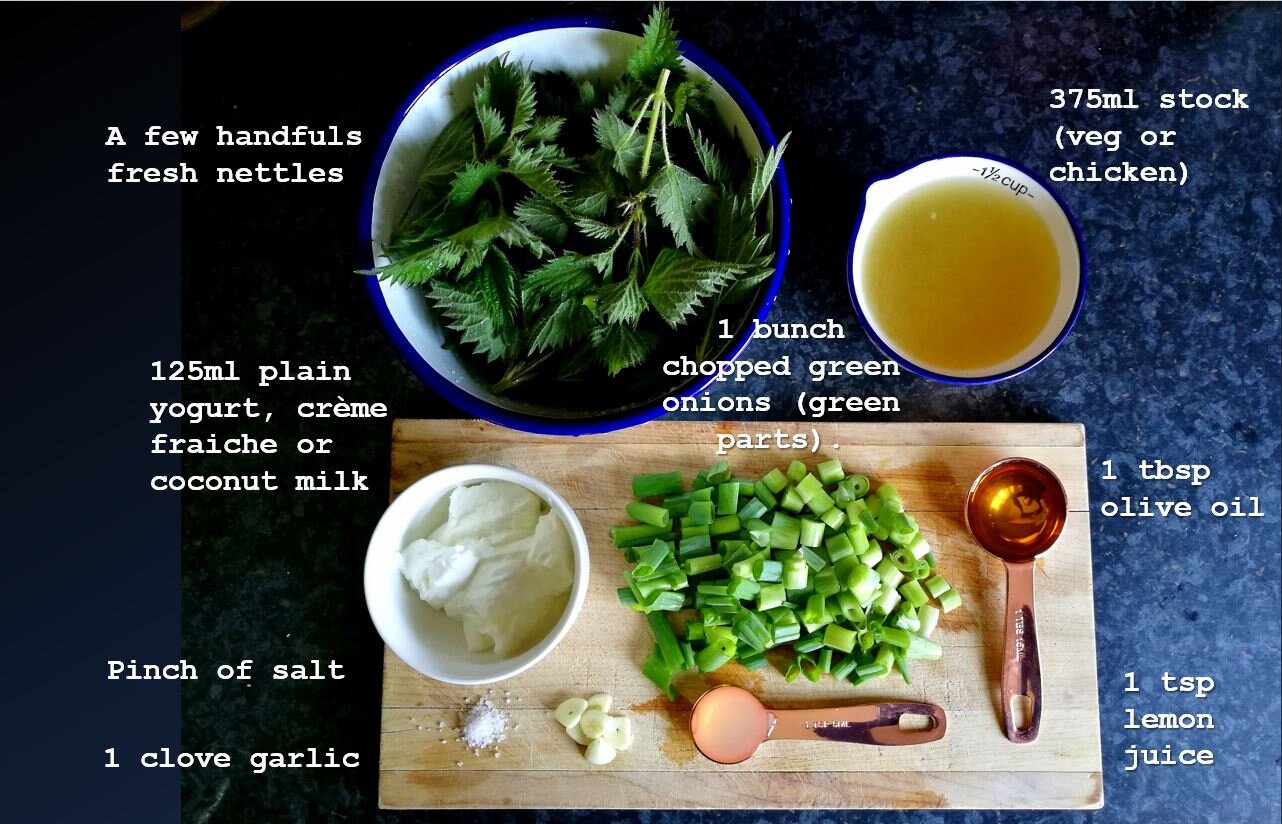Stinging Nettle (Urtica diotica)
For thousands of years, nettles (Urtica diotica) would have been a welcome sight in the spring. Nettles appear early, meaning that this nutrient-rich vegetable could be foraged at a time when other food sources were scarce, winter provisions were running low, and people were in desperate need of some vitamins and minerals. Nettles are everywhere, and once you’ve accidentally brushed against them, you’re unlikely to forget what they look like! You might find nettles in your own garden, or at the edges of a park or path where you walk for daily exercise. Bring a sturdy glove and a bag with you to collect enough nettles for this foraging classic: Nettle soup, recipe below.
What it looks like
Nettles grown everywhere in the UK, often establishing themselves where little else is growing. Stinging nettles grow upright on squarish stems usually about a meter tall, but they can be much, much taller. Leaves grow in opposite pairs alternately up the stem at equal distances. The leaves are bright green, pointed, toothed, and hairy, as are the stems. The flowers and fruits grow in drooping clusters from the bases of the leaves. Also, it stings. Its roots are shallow and it can be easily uprooted. Stems are woody towards the base and tender towards the top.
Uses
Stinging nettles have been an important food source throughout history and have been eaten as a pot herb, as well as taken as a tea. They are nutritionally rich and with a mild, mineral flavour. It’s also used to make yellow-green dyes for fabric, and is an excellent plant for cordage (see Ropes, Knots and Natural Cordage section in Practical Skills) and fiber.
Nettles are best for eating when they are young and tender, before they begin to flower. This means harvesting them when they begin to appear in late winter/early spring, or where they begin to regrow in an area where they have been cut back.
RECIPE: Nettle Soup
IN THE FIELD
Pick the nettles. Only take the tops of nettles, choosing ones that are not flowering. They should be delicate, not tough or woody. Remove any bits of grass or obvious critters while you are gathering.
Once home, soak the nettles in cold water, removing anything you don’t want to eat as it floats to the surface. Drain the nettles well.
TO PREPARE
Put the oil in a small saucepan over medium heat and add the garlic and chopped green onions, stirring for a minute while the greens soften.
Add the stock and nettles to the pot, and put the lid on. The nettles will steam, wilt and lose their sting! This will only take a couple of minutes.
Once the nettles are wilted, remove the pot from the heat. Use a hand blender (or other blender) to blend the soup smooth. Add the yogurt, crème fraiche or coconut milk, the lemon juice and salt and stir until well combined. Reheat the soup on low heat until it is back up to heat. Taste the soup and adjust seasoning as needed.
This is a good cup soup! Serve with crusty bread and butter and enjoy in the garden. Serves one hungry person or 2-3 if they just want a taste.


